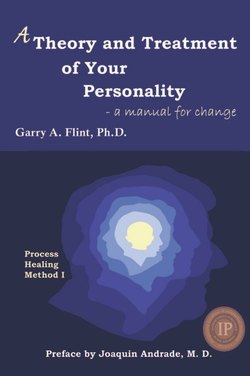Читать книгу A Theory and Treatment of Your Personality - Garry Flint - Страница 32
На сайте Литреса книга снята с продажи.
Barriers and disorganization
ОглавлениеTreating parts and other bothersome issues can now begin, but not without some potential barriers to treatment. Any extra activity in the Active Experience causes a barrier. There are a number of causes for the extra activity. Prebirth parts that respond instead of the subconscious, parts that demand treatment, or parts that want treatment at the same time can cause the activity. Often, parts can wake up and interfere with the therapist’s communication with the subconscious. Others positively don’t want treatment. Any one of these parts, therefore, can cause a barrier to the treatment process. These disruptive parts have to be helped to join the Treatment Team either by a representative of the Treatment Team, the subconscious, or the therapist. Chapter 3 and later chapters provide treatment details about these and other barriers to treatment. Activity in the Active Experience causes a condition called disorganization, which is a barrier to treatment.
Treatment in the Active Experience requires that the Active Experience be calm or organized so the structure of the trauma part does not change. The activity of other parts or active memories in the Active Experience can disorganize the Active Experience. The disorganization stops the treatment process. When the Active Experience is disorganized, the activity in the Active Experience changes the trauma memory’s neural structure to a series of new memory structures. This is not, in itself, a problem because a new memory structure created once is not permanent. However, this disorganization prevents negative emotions associated with the target memory structure from changing, and hence the treatment process does not work to change the pain associated with the target.
Many kinds of barriers can stop the treatment process or inhibit communication with the subconscious. Chapter 3 explains in detail about removing these barriers. Giving information or looking at the barrier in a different way handles most of them. Sometimes removing the barrier involves explaining the function of the brain or explaining how the barrier interferes with getting more satisfaction and less pain. Here is a partial list of the barriers:
•A part has just awakened and needs educating, or there is more than one part active in the Active Experience at the same time.
•Sometimes a part doesn’t want treatment because of the fear of pain or loss of function, or a part wants more pain and less satisfaction.
•Some parts have beliefs that stop them from communicating.
•Less often, a barrier is caused by a part without eyes or ears, or a part that is emotional or muscle activity is functional, while the sensory experiences of that part remain dormant.
•Finally, a barrier is caused when a brain polarity reversal stops the learning process necessary for treatment.
Soon, you will read a transcript of a first treatment session giving the dialogue between the therapist, the patient, and the subconscious. The transcript will give you an idea of how Process Healing works. It shows how I introduce the Process Healing Method. Several barriers are resolved. I have also included examples of treatment interventions showing how I handle (residual) issues. There are some examples of problem solving. I also describe interventions, such as tagging and treating parts, and give three examples: treating shame and guilt, dreams, and anger.
